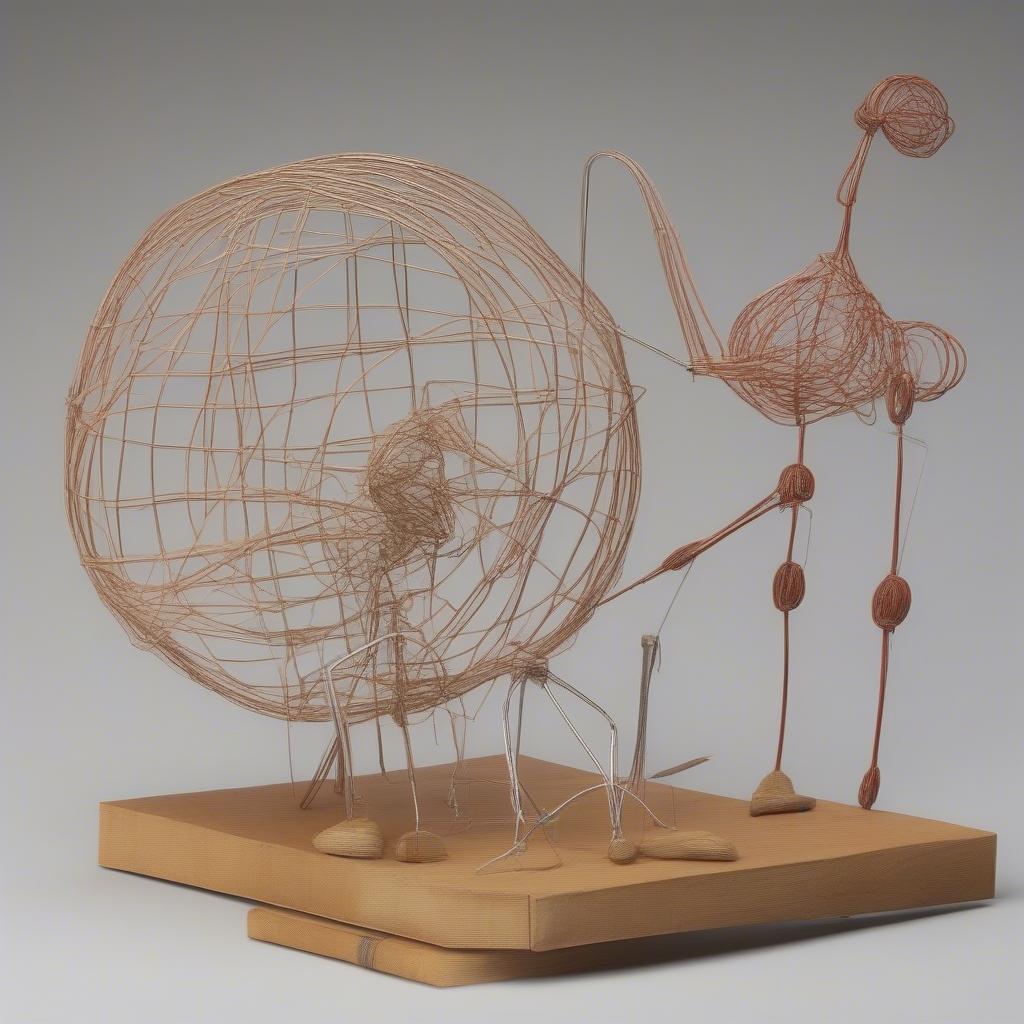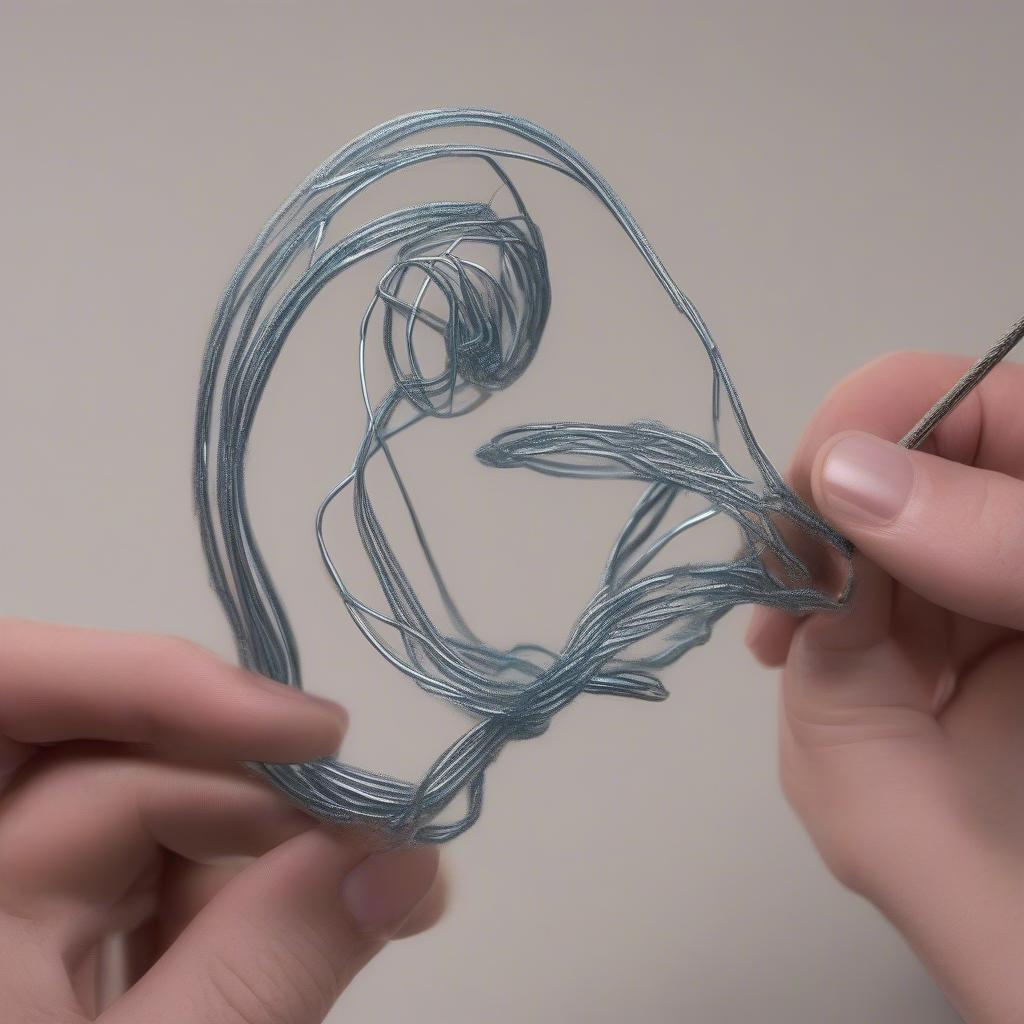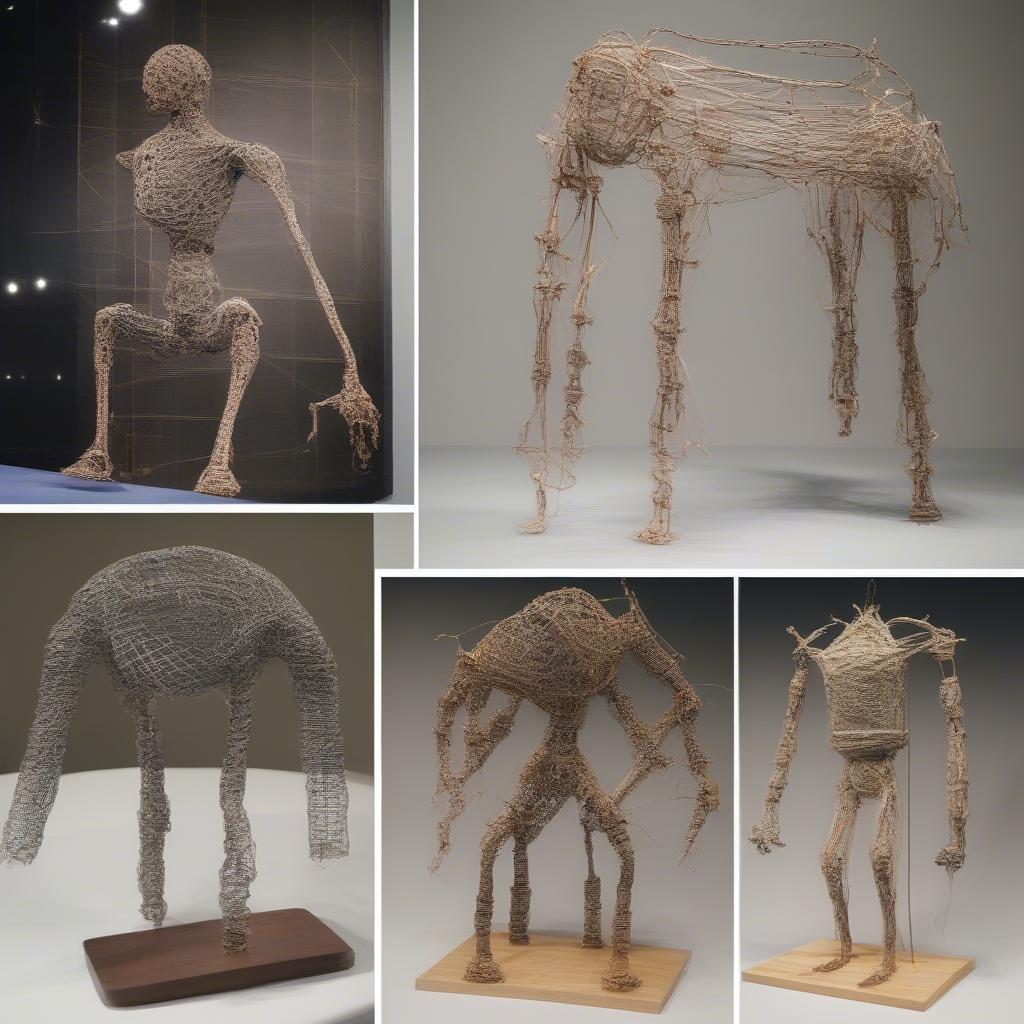Basket Weaving
Mastering the Basket Weave Armature: A Comprehensive Guide
Basket Weave Armature is the skeletal framework that provides structure and support to a woven piece, especially crucial in creating intricate basketry and sculptural forms. Understanding its role and techniques is essential for taking your weaving skills to the next level. This guide will delve into everything you need to know about basket weave armature, from choosing the right materials to mastering advanced winding techniques.
What is a Basket Weave Armature?
A basket weave armature acts as the backbone of your woven creation. Think of it as the skeleton that gives shape and stability to your basket or sculpture. This underlying structure, often hidden beneath the woven material, determines the final form and allows for more complex designs. Whether you’re crafting a simple basket or an elaborate woven sculpture, a well-constructed armature is key to its success.  Examples of Basket Weave Armatures
Examples of Basket Weave Armatures
Choosing the Right Materials for Your Armature
The choice of material for your basket weave armature depends on the size, shape, and intended use of your final piece. Common materials include wire (especially galvanized or stainless steel for durability), reed, and even wood. For smaller, delicate baskets, thinner, more pliable wire works well. Larger projects might require thicker gauge wire or even a combination of materials for added strength. Consider the weight of the weaving material you’ll be using and how much stress the finished piece will endure. Reed armatures, for example, are ideal for creating organic, freeform shapes.
Basic Basket Weave Armature Winding Techniques
Several basic winding techniques are foundational for creating a solid armature. The most common include wrapping, coiling, and twisting. Wrapping involves tightly winding the material around a form, like a mold or a pre-existing structure. Coiling involves creating a continuous spiral, useful for building up the sides of a basket or sculpture. Twisting two or more pieces of the armature material together adds strength and creates a decorative element.  Basic Basket Weave Armature Winding Techniques Practice these techniques on simple projects before moving on to more complex designs.
Basic Basket Weave Armature Winding Techniques Practice these techniques on simple projects before moving on to more complex designs.
Advanced Armature Construction for Sculptural Forms
For those looking to create intricate woven sculptures, mastering advanced armature techniques is essential. These include building three-dimensional frameworks, incorporating different materials, and creating joints and connections. Planning and sketching your design beforehand is crucial. Think about how the armature will support the weight and shape of your chosen weaving materials. Securely joining different parts of the armature is essential for stability. Techniques like lashing, binding, and soldering can be employed, depending on the materials used.
Creating a Sturdy Foundation for Your Woven Sculptures
A sturdy armature is the foundation of any successful woven sculpture. It provides the necessary support for the weaving materials, allowing you to create complex and intricate forms. “A well-designed armature is like a blueprint for your sculpture,” says renowned basket weaver, Emily Carter. “It dictates the overall shape and allows you to push the boundaries of your weaving.”
[basket weave armature winding]Exploring Different Materials for Sculptural Armatures
Experimenting with different materials for your armature can open up new creative possibilities. While wire is a common choice, consider incorporating other materials like wood, bamboo, or even found objects. “Don’t be afraid to explore unconventional materials,” advises Carter. “The armature itself can become a design element, adding texture and visual interest to your finished piece.”
 Advanced Basket Weave Armatures for Sculptures
Advanced Basket Weave Armatures for Sculptures
Troubleshooting Common Armature Problems
Sometimes, even with careful planning, armature problems can arise. Common issues include warping, instability, and breakage. Warping can occur if the armature material is too thin or if it’s not properly secured. Instability can result from weak joints or an unbalanced design. Breakage can happen if the armature material is not strong enough to support the weight of the weaving. Addressing these issues often involves reinforcing the armature with additional material or adjusting the design.
How to Fix a Warped Armature
If your armature warps, you might need to add additional supports or adjust the tension of the existing structure. Sometimes, gently applying heat to the warped area can help reshape it.
Ensuring the Stability of Your Armature
Ensuring stability is crucial, especially for larger sculptures. Check all joints and connections to make sure they are secure. You might need to add extra bracing or supports.
“Remember, a strong and stable armature is the key to a successful woven piece,” reminds Carter. “Take the time to build a solid foundation, and your weaving will flourish.”
Conclusion
Basket weave armature is the unsung hero of many beautiful woven creations. Whether you’re crafting a simple basket or a complex sculpture, understanding the principles of armature construction is essential. From choosing the right materials to mastering advanced techniques, this guide provides a comprehensive overview of everything you need to know to create a strong and supportive framework for your weaving projects. So, gather your materials, experiment with different techniques, and let your creativity soar! Mastering the basket weave armature will unlock a world of possibilities in your weaving journey.
FAQ
- What is the best material for a basket weave armature?
- How do I prevent my armature from warping?
- What are the basic basket weave armature winding techniques?
- How do I create a three-dimensional armature for a sculpture?
- What are some common armature problems and how do I fix them?
- Where can I find more resources on basket weaving?
- What types of weaving materials work well with different armatures?
Have other questions? Contact us at Hanoi, Vietnam or Tech Avenue, Suite 12, San Francisco, CA 94105, USA. We have a 24/7 customer support team.
